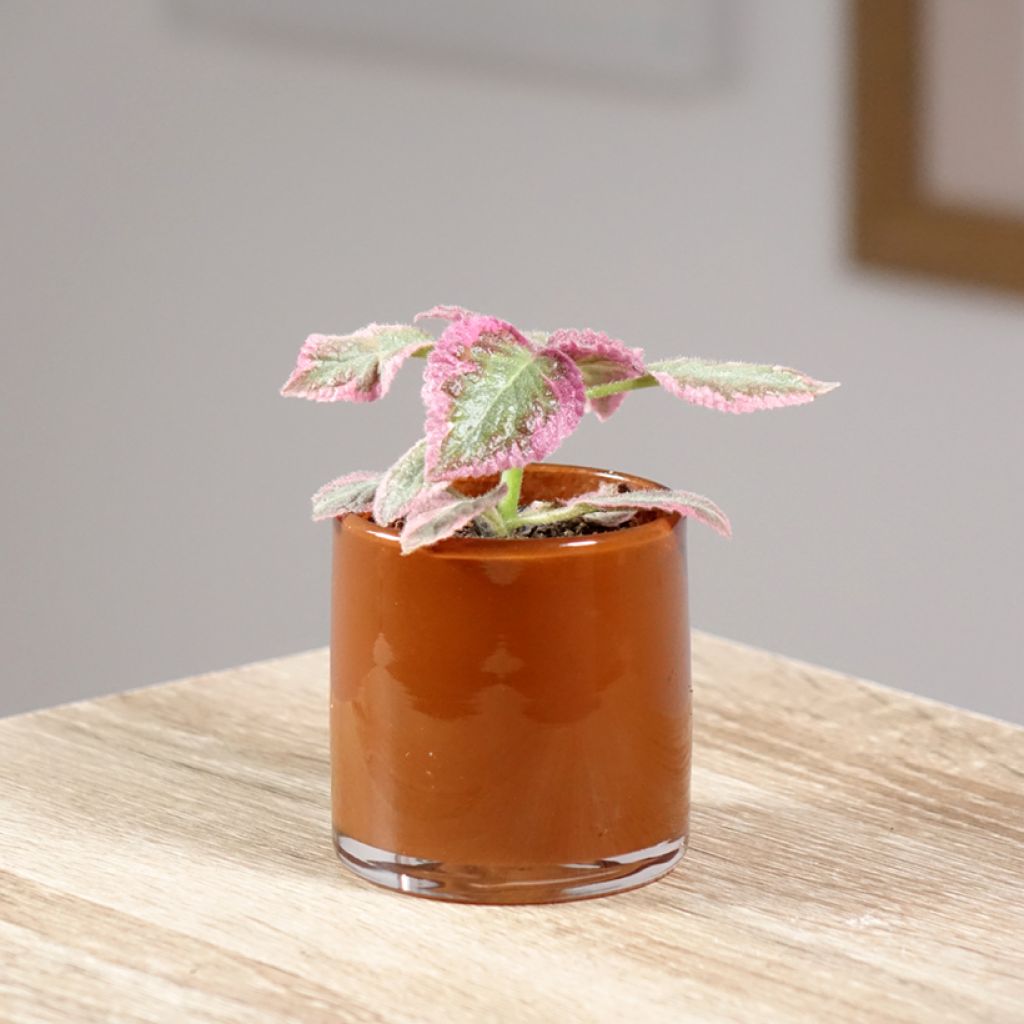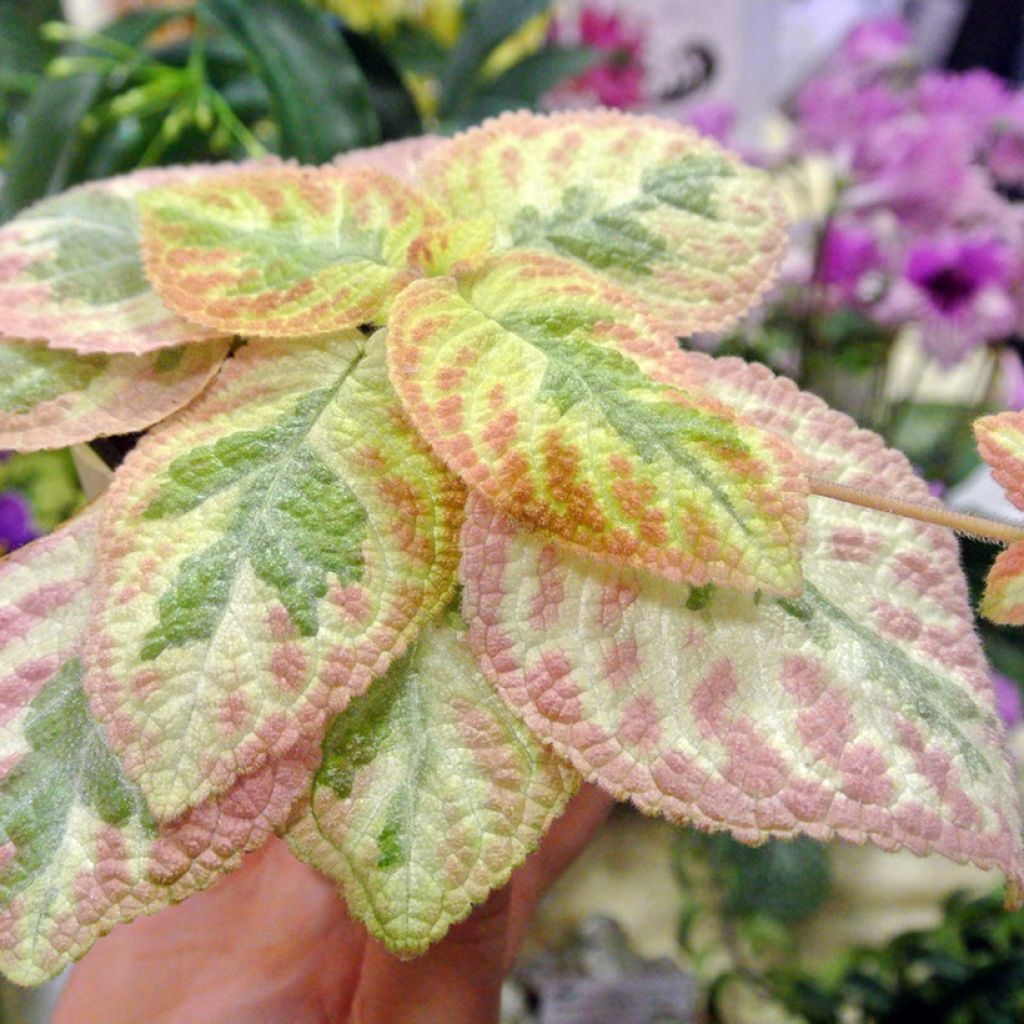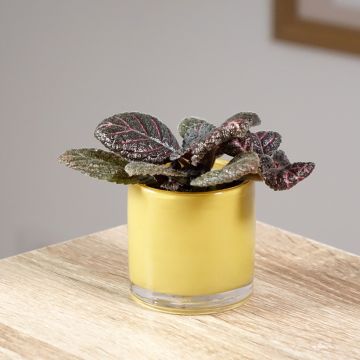

Episcia cupreata Pink Brocade - Flame violet


Episcia cupreata Pink Brocade - Flame violet
Episcia cupreata Pink Brocade - Flame violet
Episcia cupreata Pink Brocade
Flame violet
Special offer!
Receive a €20 voucher for any order over €90 (excluding delivery costs, credit notes, and plastic-free options)!
1- Add your favorite plants to your cart.
2- Once you have reached €90, confirm your order (you can even choose the delivery date!).
3- As soon as your order is shipped, you will receive an email containing your voucher code, valid for 3 months (90 days).
Your voucher is unique and can only be used once, for any order with a minimum value of €20, excluding delivery costs.
Can be combined with other current offers, non-divisible and non-refundable.
This plant carries a 30 days recovery warranty
More information
We guarantee the quality of our plants for a full growing cycle, and will replace at our expense any plant that fails to recover under normal climatic and planting conditions.
Description
The Episcia 'Pink Brocade' is a colourful cultivar of this South American perennial grown here as a houseplant under the name 'Flame Violet'. It develops velvety leaves with a soft, downy texture adorned with delicate pink, silver, brown, and light green patterns, creating a lovely contrast. Episcias are stoloniferous lianas that are best placed in hanging baskets from which they cascade elegantly. They may eventually flower under good growing conditions: bright, indirect light (though they appreciate some gentle sunlight), a very airy and well-drained substrate, frequent watering, and moderate to fairly high ambient humidity—but avoid misting the leaves directly.
The Episcia 'Pink Brocade' belongs to the Gesneriaceae family and is a horticultural cultivar grown for its ornamental qualities, also known as Episcia 'Cleopatra' or Episcia 'Cerri’s Tricolor'. Derived from the Episcia cupreata species, this perennial exhibits rapid growth, typically reaching a length of 40 cm to 1 m depending on growing conditions, with a spread of 20 to 30 cm. It is a liana, similar to a vine, developing fairly flexible, long stems with numerous downy, velvety, ovate, dentate, and textured leaves adorned with stunning green hues, metallic tones, and white, pink, reddish, and brown accents. Flowering may occur in the form of small tubular flowers in various colours, most often bright red. The Episcia genus includes about ten species native to northern South America, specifically Colombia, Brazil, Panama, and Venezuela. They grow as stoloniferous, herbaceous ground cover in tropical forests. These plants thrive under the canopy of humid forests, benefiting from dappled light and a warm, moist atmosphere. The best-known relative of the Episcia is the African Violet or Saintpaulia.
Indoors, the Episcia is a somewhat temperamental plant to grow, and this is even more true for varieties with non-green foliage. It prefers bright light and may enjoy some gentle sunlight during the earliest or latest hours of the day but dislikes drying out from direct sun. Keep the substrate slightly moist but not waterlogged. Avoid wetting the foliage. Moderate to high ambient humidity is ideal, above 50-60%, with temperatures between 18°C and 27°C. It is essential to protect the plant from draughts, dry radiator air, and temperatures below 15°C.
The Episcia 'Pink Brocade' may thrive when grown in a terrarium or under a cloche, at least initially, to provide high ambient humidity without misting. Under these conditions, it grows quickly, so it won’t stay there for very long. It fits perfectly into a bohemian or tropical interior thanks to its colourful foliage, elegant appearance, and exotic flowering. Hang it in a basket near a humidifier, alongside plants from the Araceae family with similar needs.
Report an error about the product description
Foliage
Plant habit
Flowering
Botanical data
Episcia
cupreata
Pink Brocade
Gesneriaceae
Flame violet
Cultivar or hybrid
Other Episcia - Flame violet
View all →Location
Location
Maintenance and care
Watering tips
Potting advice, substrates and fertilisers
Houseplant care
Disease and pest advice
Maintenance and care
This item has not been reviewed yet - be the first to leave a review about it.
Haven't found what you were looking for?
Hardiness is the lowest winter temperature a plant can endure without suffering serious damage or even dying. However, hardiness is affected by location (a sheltered area, such as a patio), protection (winter cover) and soil type (hardiness is improved by well-drained soil).

Photo Sharing Terms & Conditions
In order to encourage gardeners to interact and share their experiences, Promesse de fleurs offers various media enabling content to be uploaded onto its Site - in particular via the ‘Photo sharing’ module.
The User agrees to refrain from:
- Posting any content that is illegal, prejudicial, insulting, racist, inciteful to hatred, revisionist, contrary to public decency, that infringes on privacy or on the privacy rights of third parties, in particular the publicity rights of persons and goods, intellectual property rights, or the right to privacy.
- Submitting content on behalf of a third party;
- Impersonate the identity of a third party and/or publish any personal information about a third party;
In general, the User undertakes to refrain from any unethical behaviour.
All Content (in particular text, comments, files, images, photos, videos, creative works, etc.), which may be subject to property or intellectual property rights, image or other private rights, shall remain the property of the User, subject to the limited rights granted by the terms of the licence granted by Promesse de fleurs as stated below. Users are at liberty to publish or not to publish such Content on the Site, notably via the ‘Photo Sharing’ facility, and accept that this Content shall be made public and freely accessible, notably on the Internet.
Users further acknowledge, undertake to have ,and guarantee that they hold all necessary rights and permissions to publish such material on the Site, in particular with regard to the legislation in force pertaining to any privacy, property, intellectual property, image, or contractual rights, or rights of any other nature. By publishing such Content on the Site, Users acknowledge accepting full liability as publishers of the Content within the meaning of the law, and grant Promesse de fleurs, free of charge, an inclusive, worldwide licence for the said Content for the entire duration of its publication, including all reproduction, representation, up/downloading, displaying, performing, transmission, and storage rights.
Users also grant permission for their name to be linked to the Content and accept that this link may not always be made available.
By engaging in posting material, Users consent to their Content becoming automatically accessible on the Internet, in particular on other sites and/or blogs and/or web pages of the Promesse de fleurs site, including in particular social pages and the Promesse de fleurs catalogue.
Users may secure the removal of entrusted content free of charge by issuing a simple request via our contact form.
The flowering period indicated on our website applies to countries and regions located in USDA zone 8 (France, the United Kingdom, Ireland, the Netherlands, etc.)
It will vary according to where you live:
- In zones 9 to 10 (Italy, Spain, Greece, etc.), flowering will occur about 2 to 4 weeks earlier.
- In zones 6 to 7 (Germany, Poland, Slovenia, and lower mountainous regions), flowering will be delayed by 2 to 3 weeks.
- In zone 5 (Central Europe, Scandinavia), blooming will be delayed by 3 to 5 weeks.
In temperate climates, pruning of spring-flowering shrubs (forsythia, spireas, etc.) should be done just after flowering.
Pruning of summer-flowering shrubs (Indian Lilac, Perovskia, etc.) can be done in winter or spring.
In cold regions as well as with frost-sensitive plants, avoid pruning too early when severe frosts may still occur.
The planting period indicated on our website applies to countries and regions located in USDA zone 8 (France, United Kingdom, Ireland, Netherlands).
It will vary according to where you live:
- In Mediterranean zones (Marseille, Madrid, Milan, etc.), autumn and winter are the best planting periods.
- In continental zones (Strasbourg, Munich, Vienna, etc.), delay planting by 2 to 3 weeks in spring and bring it forward by 2 to 4 weeks in autumn.
- In mountainous regions (the Alps, Pyrenees, Carpathians, etc.), it is best to plant in late spring (May-June) or late summer (August-September).
The harvesting period indicated on our website applies to countries and regions in USDA zone 8 (France, England, Ireland, the Netherlands).
In colder areas (Scandinavia, Poland, Austria...) fruit and vegetable harvests are likely to be delayed by 3-4 weeks.
In warmer areas (Italy, Spain, Greece, etc.), harvesting will probably take place earlier, depending on weather conditions.
The sowing periods indicated on our website apply to countries and regions within USDA Zone 8 (France, UK, Ireland, Netherlands).
In colder areas (Scandinavia, Poland, Austria...), delay any outdoor sowing by 3-4 weeks, or sow under glass.
In warmer climes (Italy, Spain, Greece, etc.), bring outdoor sowing forward by a few weeks.






























